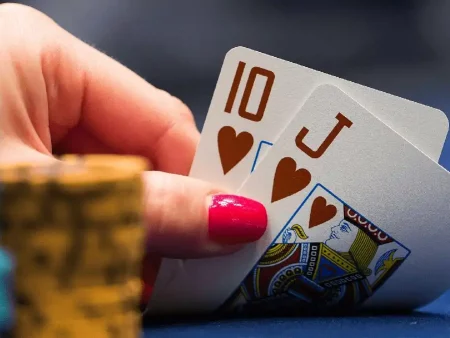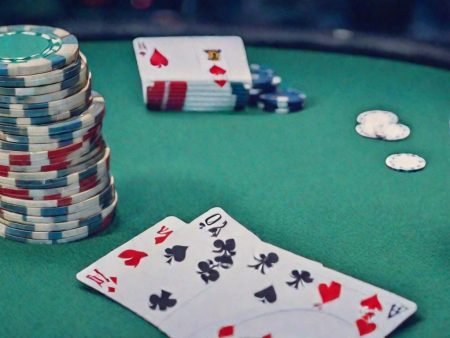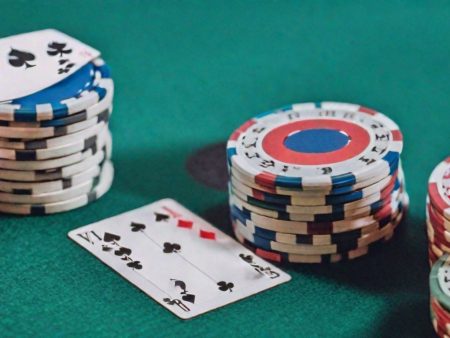The M-ratio is a key metric in poker that helps players manage their stack and make informed decisions during tournaments. It indicates how many rounds of betting you can survive with your current stack, taking into account the blinds, antes, and the current betting structure.
The M-ratio becomes especially important in tournaments where the blinds and antes increase with each level. Understanding your M-ratio helps players decide whether to take a more aggressive approach to accumulate chips or play more conservatively to survive. Knowing this value can be a game-changer in poker tournaments, both online and live.
How to Calculate Your M-Ratio
To calculate your M-ratio, you need to know a few key factors:
- Stack size — this is the number of chips you have at the moment.
- Current blinds and antes — these values may change as the tournament progresses, so it’s important to keep track.
The formula to calculate the M-ratio is simple:
M = (Player’s Stack) / (Big Blind + Ante).
This calculation tells you how many rounds you can last before your stack becomes too small to continue. If your M-ratio is low, it’s a signal to take action, either by becoming more aggressive or playing to survive longer.
Read also: Hijack in poker – definition and position characteristics.
M-Ratio Zones and What They Mean
The M-ratio can fall into one of several “zones,” each of which suggests a different approach to playing:
- Green Zone (M > 20): If your M-ratio is greater than 20, you’re in a comfortable position. You have enough chips to play cautiously, fold weak hands, and wait for better opportunities. In this zone, there’s no need to take unnecessary risks, and bluffing is only effective when timed correctly. Being in the green zone allows you to let your opponents fight among themselves without exposing yourself to too much risk.
- Yellow Zone (M from 10 to 20): If your M is between 10 and 20, your stack is shrinking faster, and you need to become more active. The blinds increase regularly, so it’s important to play aggressively and look for opportunities to rebuild your stack. Bluffing can still be effective, but timing and choosing the right opponent are key.
- Orange Zone (M from 5 to 10): In the orange zone, you can’t afford to play passively. Going all-in with almost any hand becomes the norm. However, it’s better to do this from later positions, where you can widen your hand range. It’s also essential to observe your opponents’ M-ratios and their playing styles. Bluffing is not recommended in this zone.
- Red Zone (M < 5): When your M-ratio is less than 5, you’re in a critical situation. You’ll need to go all-in with nearly any hand to avoid being eliminated. However, keep in mind that players with higher M-ratios may often call your bets. Aggressive play is a must to stay in the tournament.
- Dead Zone (M = 1): A M-ratio of 1 signals that you’re in the “dead zone.” Even doubling your stack may not save you, and you will constantly feel at risk of being eliminated. Each hand becomes do-or-die.
Understanding your M-ratio allows you to adapt your strategy based on your current tournament situation and can be a crucial factor in your success.
Important Note on Calculating M-Ratio
The M-ratio concept was introduced by poker analyst and professional player Dan Harrington. However, his formula had a slight error. According to his assumption, antes are paid only when players also pay blinds, which is incorrect. In reality, antes are collected every hand, and this is important to consider when calculating your M-ratio.
Read also: Flush draw in poker: improvement odds and optimal play strategies.
In tournaments with small antes, this mistake does not significantly affect the calculation. However, in online events where the ratio between antes and blinds can vary significantly, this error can impact your strategy. To calculate the M-ratio more accurately in such cases, you should consider not just the ante for one player, but multiply it by the number of players at the table. For example, if the ante is $10 and there are 9 players at the table, the total ante would be $90. The correct method would be to add the nine antes to the total blinds ($90), rather than just adding $10. This adjustment ensures a more precise assessment of your current situation and helps you plan your strategy accordingly. Want to stay ahead of other players? Check out the gambling insights blog and get exclusive tips!
FAQ: M-ratio in poker – how to calculate and use it
What is the M-Ratio in poker?
The M-Ratio, also known as the M-Index, is a poker concept used to assess a player’s chip stack in relation to the blinds and antes.
It helps determine how many times the player can afford to pay the blinds before needing to act aggressively or risk being eliminated.
How is the M-Ratio calculated in poker?
To calculate the M-Ratio, divide your current stack size by the sum of the blinds and antes.
For example, if you have 1,000 chips and the blinds are 50/100 with a 10 ante, the M-Ratio would be calculated as 1,000 / (50 + 100 + 10) = 6.25.
Why is the M-Ratio important in poker?
The M-Ratio provides players with a quick and easy way to assess their tournament life and adjust their strategy.
A low M-Ratio indicates a short stack, meaning the player must act quickly, while a high M-Ratio gives more flexibility to wait for better opportunities.
What is considered a good M-Ratio in poker?
An M-Ratio above 20 typically indicates a comfortable stack size, allowing a player to wait for strong hands.
An M-Ratio between 10-20 is average, meaning the player may need to start becoming more selective.
An M-Ratio below 10 suggests a short stack, and players should act aggressively to survive.
What does it mean if your M-Ratio is low?
A low M-Ratio (typically under 10) means you are running low on chips in relation to the blinds and antes.
Players with a low M-Ratio should focus on picking favorable spots to make moves and potentially double up, as they don’t have much time to wait for better hands.
How can players use the M-Ratio to adjust their strategy?
- High M-Ratio: Play conservatively and look for good spots to accumulate chips.
- Moderate M-Ratio: Start taking more calculated risks and be selective with your bets.
- Low M-Ratio: Be more aggressive and make moves with hands that have potential, as you need to act before your stack runs out.
What is the difference between M-Ratio and chip stack size?
While the chip stack size simply tells you how many chips you have, the M-Ratio factors in the blinds and antes, giving a more precise indication of how long your stack can last and what kind of actions you should take.
How does the M-Ratio affect tournament play?
In tournaments, the M-Ratio is crucial for assessing your survival potential.
Players with a higher M-Ratio can afford to play cautiously, while players with a lower M-Ratio need to adjust by going all-in or taking calculated risks to avoid being blinded out.
Can the M-Ratio be used in cash games?
The M-Ratio is primarily used in tournament play and is less relevant in cash games.
In cash games, players can rebuy chips, so the urgency to act based on your stack size relative to the blinds is much lower.






